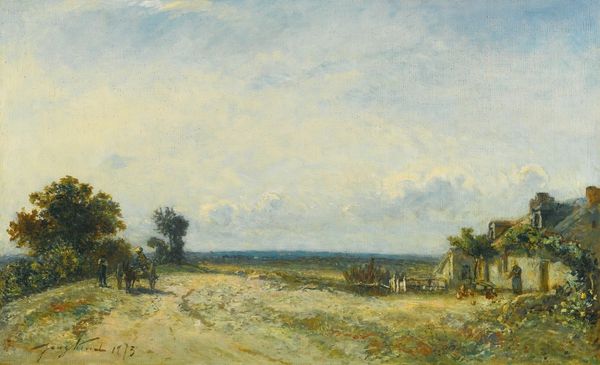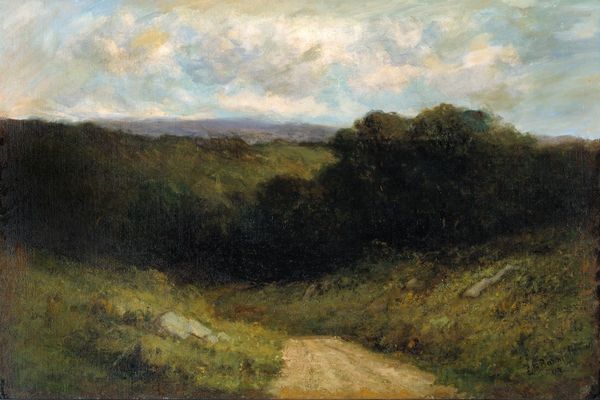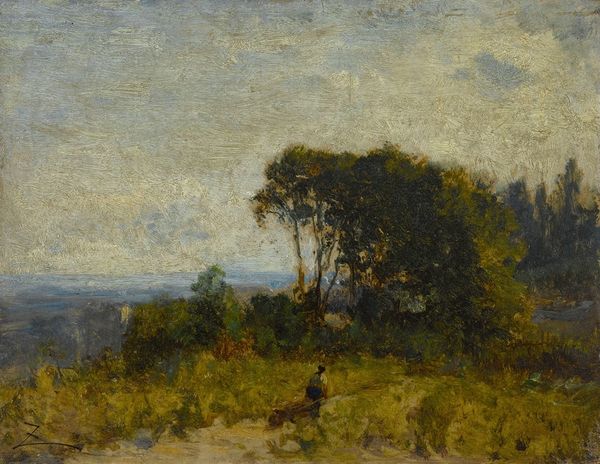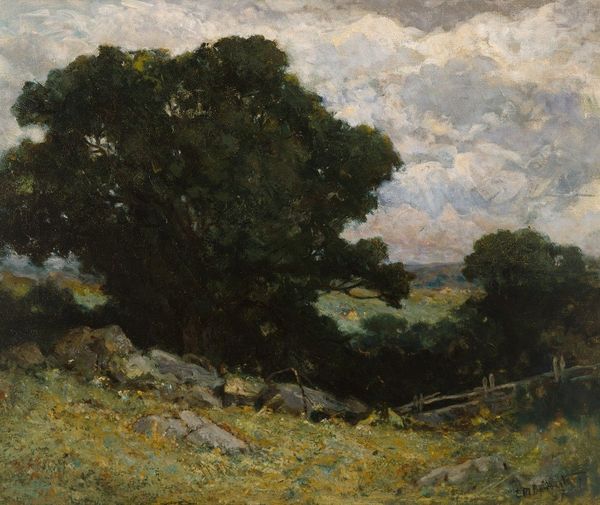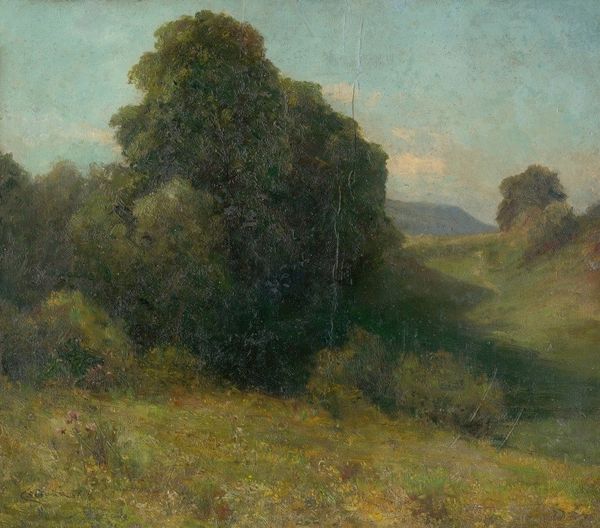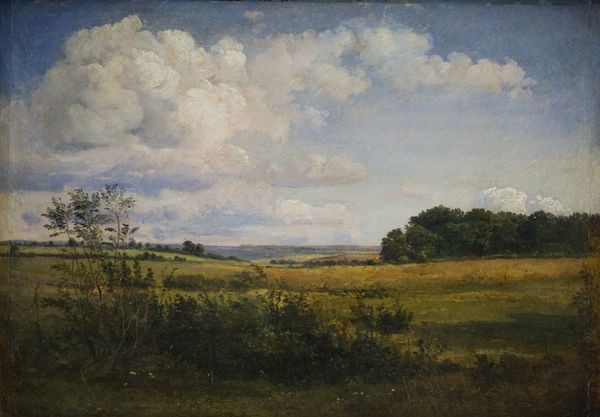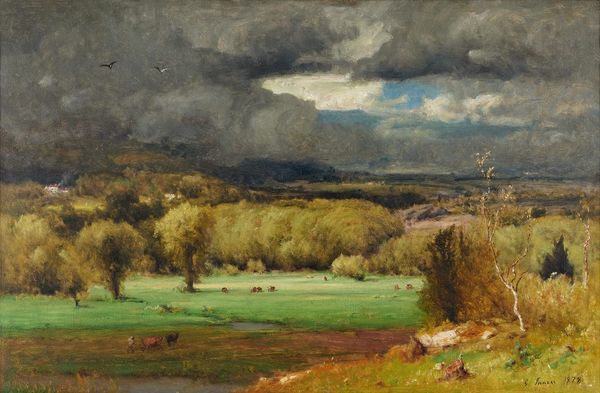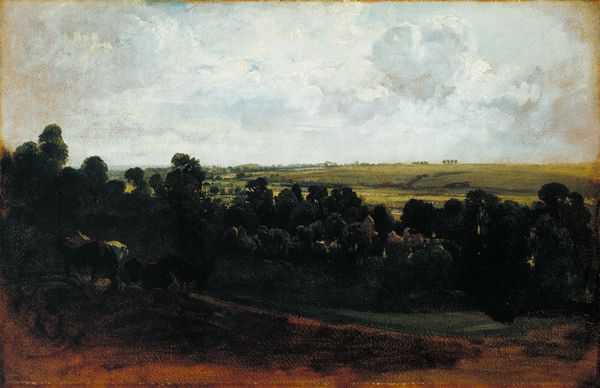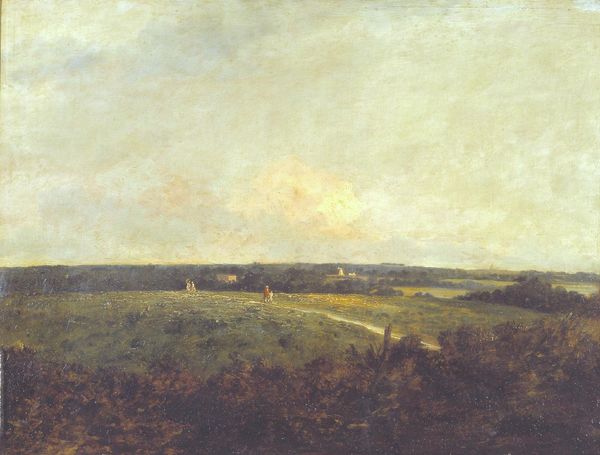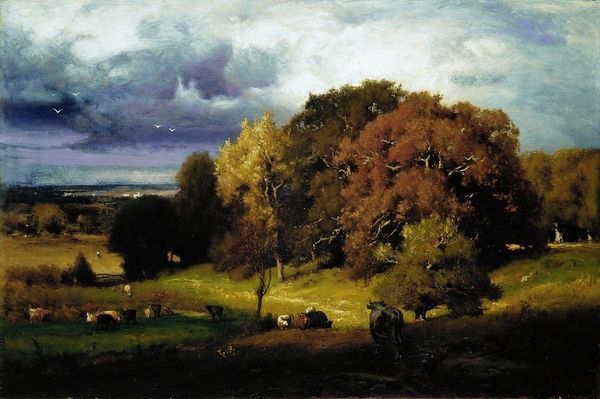
plein-air, oil-paint
#
impressionism
#
plein-air
#
oil-paint
#
landscape
#
oil painting
Copyright: Public Domain: Artvee
Editor: We’re looking at "Pleasant Pastures," an oil painting from 1887 by Edward Mitchell Bannister. It's a landscape scene, very atmospheric... kind of moody, even. There’s a field, some cows, and a dramatic sky. How do you interpret this work, especially considering Bannister's place as an African American artist in late 19th-century America? Curator: This piece offers a powerful glimpse into Bannister’s complex position. While seemingly a serene landscape, it challenges the exclusion of Black artists from the dominant narratives of American art. Consider that the very act of painting such scenes – traditionally associated with white, male artists – was a subtle act of resistance and a claiming of space. How do the pastoral elements contribute to or complicate that understanding for you? Editor: That's interesting. I hadn't thought of it in terms of claiming space. The pastoral elements... they could be seen as aspirational, reflecting a desire for peace and prosperity, maybe even the possibility of true ownership in a society that denied that to so many. Curator: Exactly. Think about the historical context. The promise of Reconstruction had largely failed. So, how does Bannister’s focus on the land, on nature, resonate with the promises, and betrayals, of that era? It compels us to consider the relationship between land, freedom, and representation. Are the cows symbolic, perhaps representing prosperity, a better life? Editor: It reframes the entire picture! The calm I initially saw becomes… loaded. The cows, the open field, become symbols of potential denied, of a vision actively fought for by Bannister, but not necessarily attained by the community in the country at large. Curator: It invites us to examine art beyond simple aesthetics and contemplate its role in socio-political dialogues. It also questions why the contributions of African American artists were so often ignored. Editor: Absolutely. It's so much more than just a landscape. Understanding the context changes everything. Thank you. Curator: And thank you for pushing to contextualize this artwork, to connect it to wider political narratives.
Comments
No comments
Be the first to comment and join the conversation on the ultimate creative platform.
